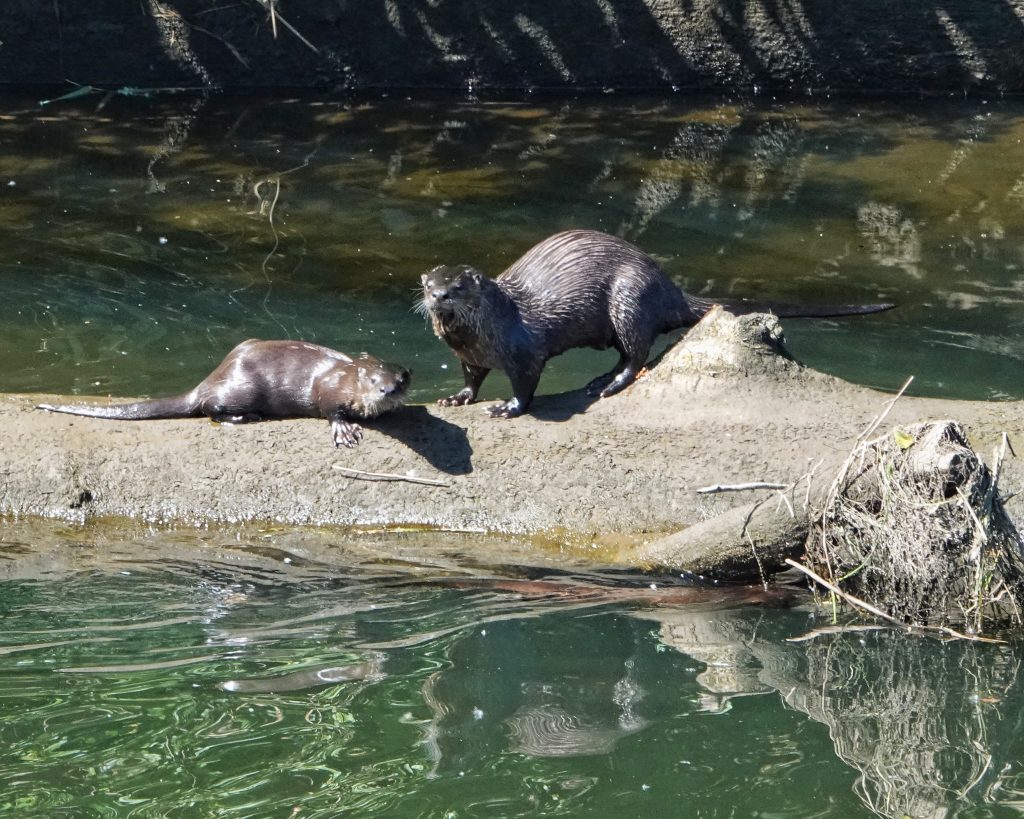
There is a lot to say about these large members of the weasel family (Mustelidae), but first I’d like to apologize for the quality of the photos. I’m guessing it’s something to do with shade and glare off the water, and I think I buggered the f-stop on one set, but I’ve had two shots at these northern river otters on the Coweeman River, and I didn’t manage to get a single really good shot, out of the 100+ photos I took from the two separate encounters. These are the best of a bad lot. It’s particularly galling because I love otters and was so excited to find and photograph them so I could do this profile.
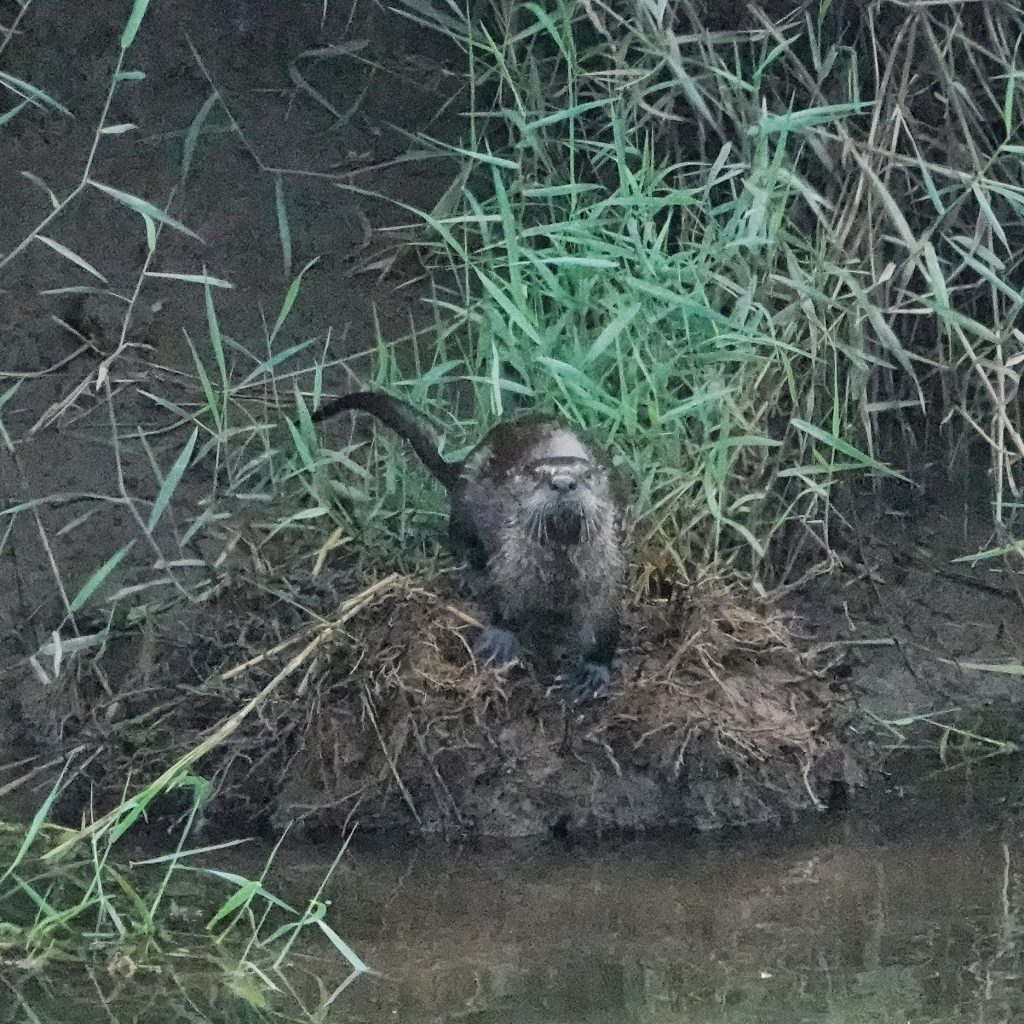
Lontra canadensis are very fun animals to watch, because they are quite social, (although most groups one sees are a mother and her kits, and males tend to be much more solitary except during breeding season, and occasionally with a family group when the mother is accepting of them) and playful in a way one doesn’t see very often with North American mammals. Although they are frequently active at night (especially when away from the water), they are routinely seen during daylight hours. They seem to love to slide, utilizing it for locomotion on snow, ice, mud, and even inclined grassy slopes, and engaging in what looks like ‘body sledding’ by repeatedly climbing up a riverbank or lakeshore, and sliding back down it to the water.
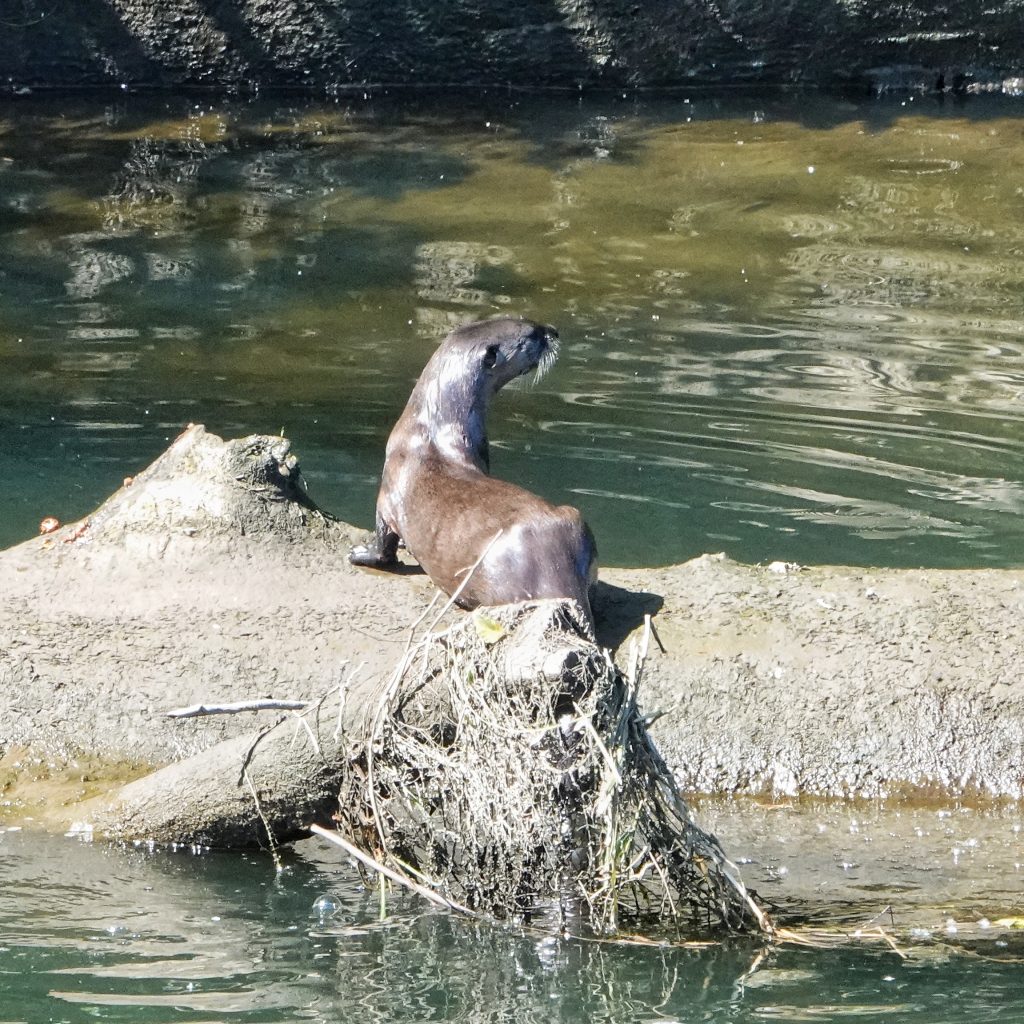
But they are not cuddly critters, and the reason they have time and energy for play is because they are smart, fierce, agile, and efficient predators. They can swim fast enough to catch trout, although dietary studies have shown that they more often target fish like suckers, pike minnows, perch, and sunfish (family Centrarchidae, which includes bass), and they will eat almost anything they can catch, including other mammals, and small waterfowl and other birds, as well as many aquatic invertebrates. They have webbed feet and a powerful tail to help scull them through the water, and long whiskers that aid in prey detection in dark or murky water. Despite their relatively short legs they can move fairly quickly on land, attaining speeds up to 15mph for short bursts.
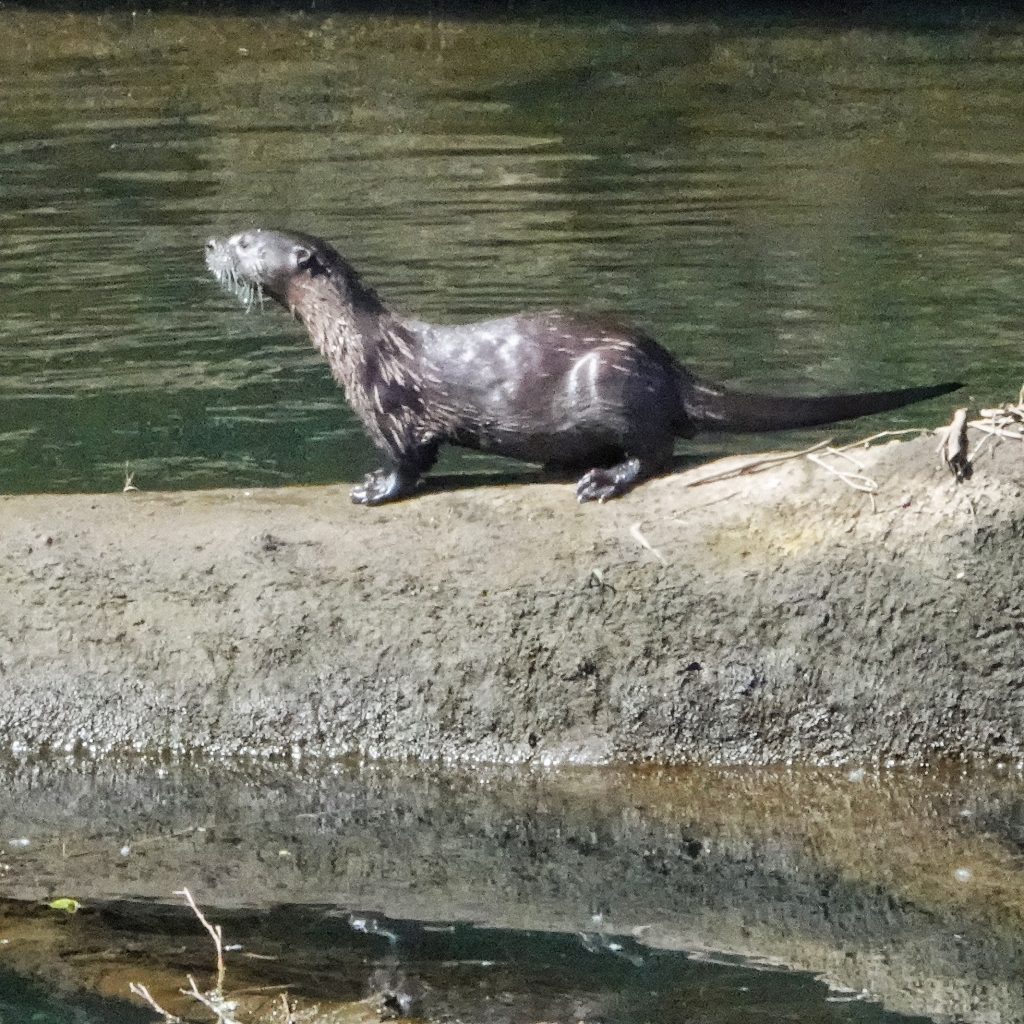
River otters can stay underwater for 5-8 minutes (depending on the source one reads), which means they can pursue prey a considerable distance without having to come up for air, until the prey tires or makes a mistake. And they have different sized lungs, the right one being twice the size of the left, with four lobes instead of two. It is presumed that this is a trade off between lung capacity and a level of buoyancy which might preclude diving deeply. They can close their ears and nostrils when underwater, and they are nearsighted, which gives them better vision underwater, as well as having a transparent nictitating membrane that protects their eyes when they are open underwater. Family troupes often swim single file and may be the origin of some ‘river serpent’ myths.
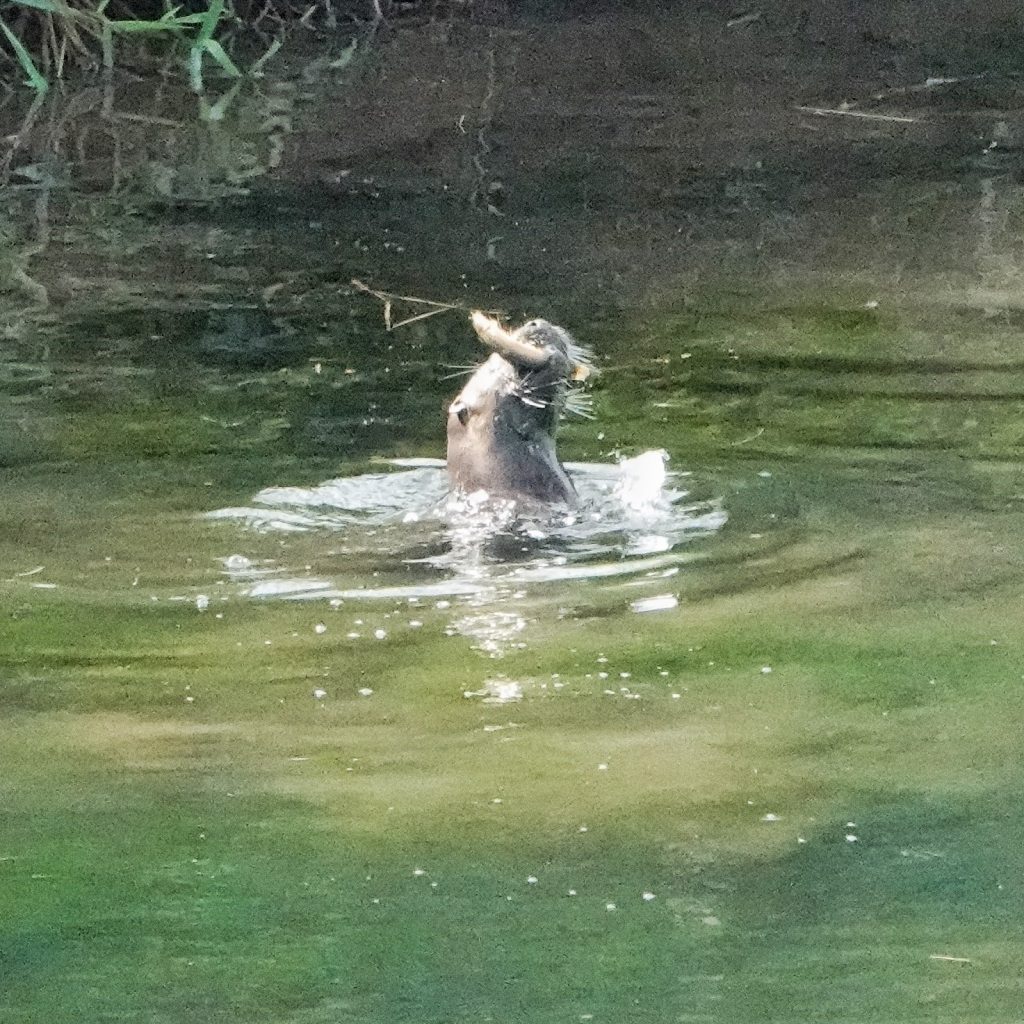
River otters do not construct their own dens, instead renovating (when necessary) the ones built by beaver, nutria, muskrats, and even those of terrestrial mammals when they are built near water. They will even cohabit with beaver in their stick and log lodges. They prefer dens with both underwater (or water level) entrances, and ones above ground. Solitary otters, or ones moving from one area to another (otters commonly traverse areas between waterbodies, as well as exploring large chunks of a given watershed), usually utilize thick vegetation, thickets, and hollow trees and logs for resting purposes.
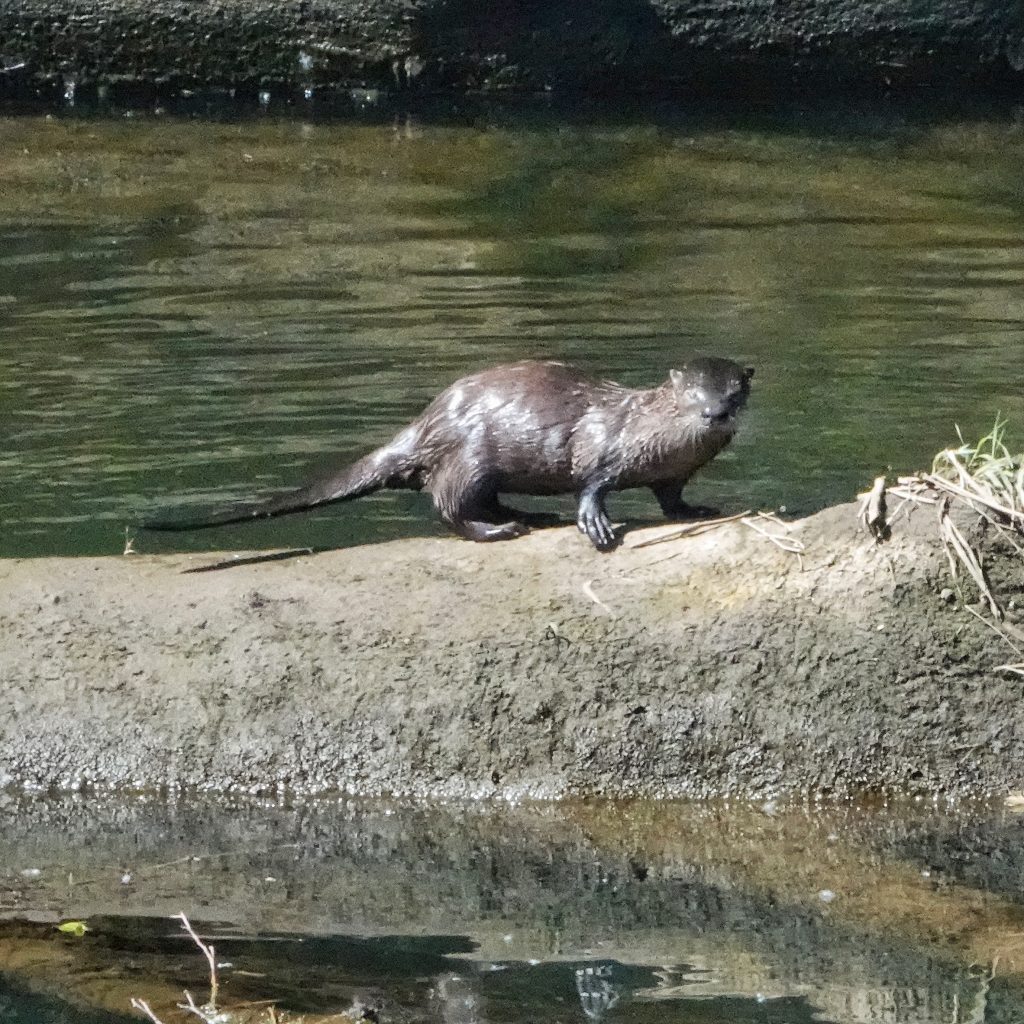
Northern river otters were historically quite common in North America, and could be found in almost every watershed. But heavy trapping for their fine, tough, and valuable fur, combined with habitat destruction due to both pollution and urbanization, has severely depleted their numbers and shrunk their range. Their numbers are rebounding, thanks to pollution control laws and restrictions on trapping and hunting them, although urban encroachment remains relatively unchecked. But they are still uncommon, and every sighting of these wonderful, beautiful, and entertaining mammals feels like a gift. One could write a book about these interesting creatures, and this profile is just the tip of the iceberg. For more information I recommend reading the articles in the links below, particularly the one from the University of Wisconsin, Stevens Point.
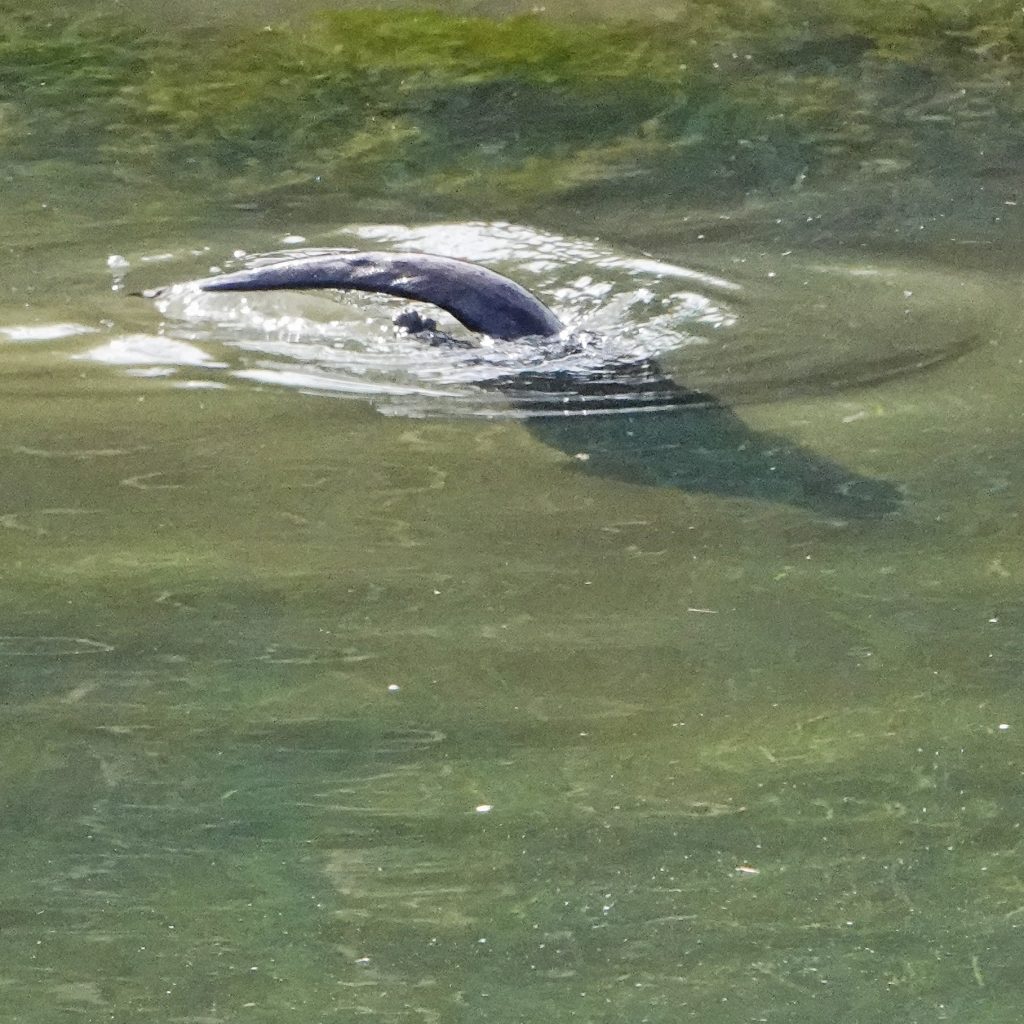
Description-Large (can be up to 4’ long, not counting the tail, and weigh up to 30 lbs) mammal with uniform chocolate brown fur above, and silver grey chest, throat, and lower face; body and head are stout but streamlined, and the fully furred tail is broad at the base and tapers evenly to the tip; swims with an undulating motion; males of all ages are consistently larger than same age females.
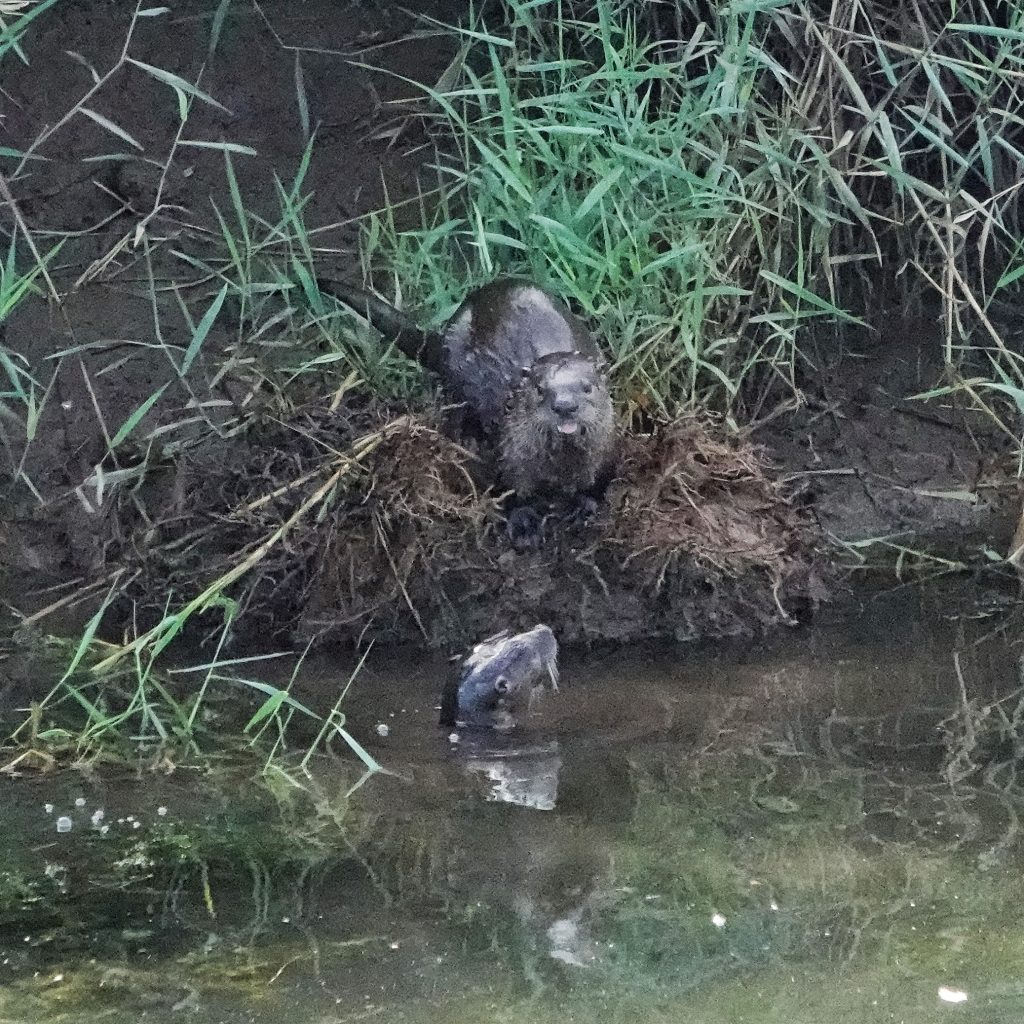
Similar species-Mink are much smaller, more lithe, with a much narrower tail at the base which doesn’t taper much; nutria have brown, grizzled fur, much stockier body, broader heads, round and hairless tails, and do not swim with an undulating motion; Beaver have broader heads, and backs, much stockier body, do not swim with an undulating motion, and have broad, flat, hairless tails; Fishers have frosted hair on their head and neck, longer legs, and a non-tapering tail.
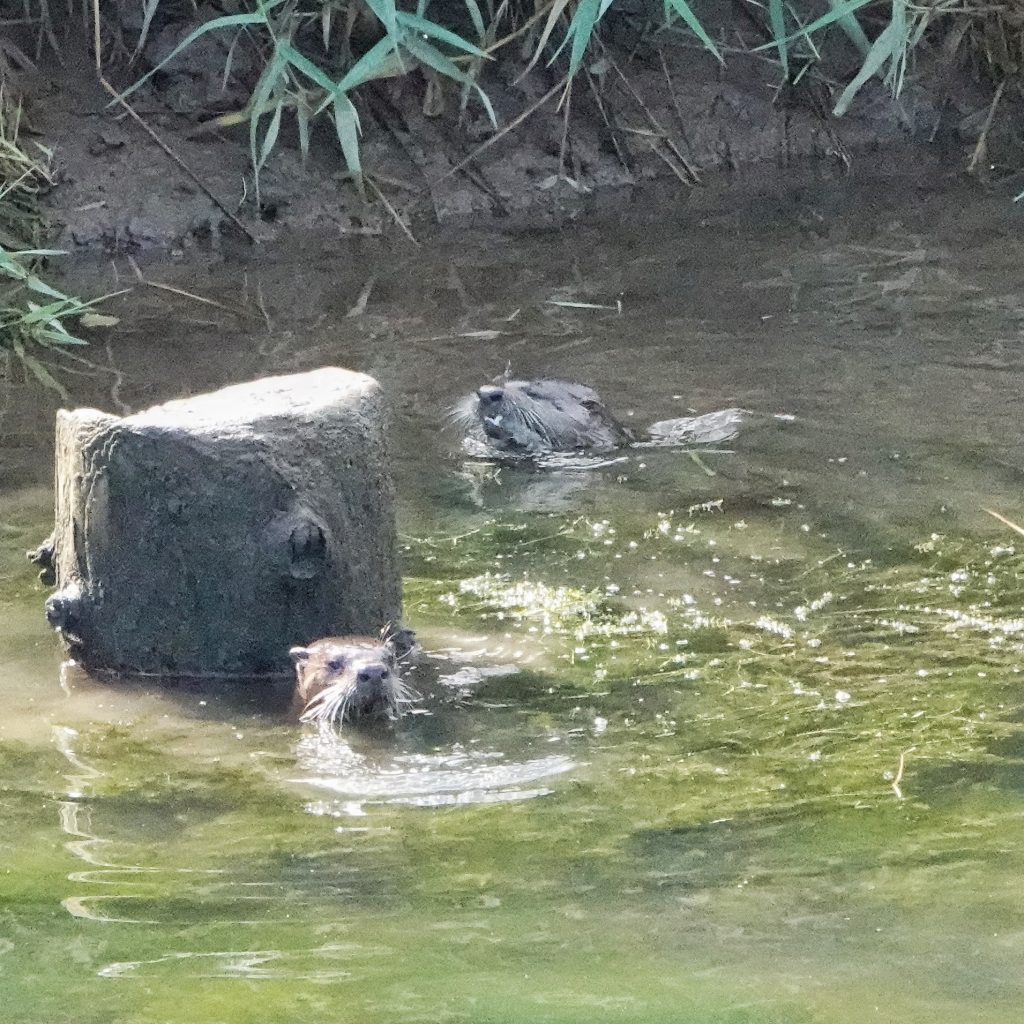
Habitat-Rivers, streams, ponds, and lakes, but may be found far from water, and are frequent visitors to ocean beaches, and riverine estuaries.
Range-Northern North America, though mostly absent in the Great Plains; region wide in appropriate habitat.
Adults active-Year around
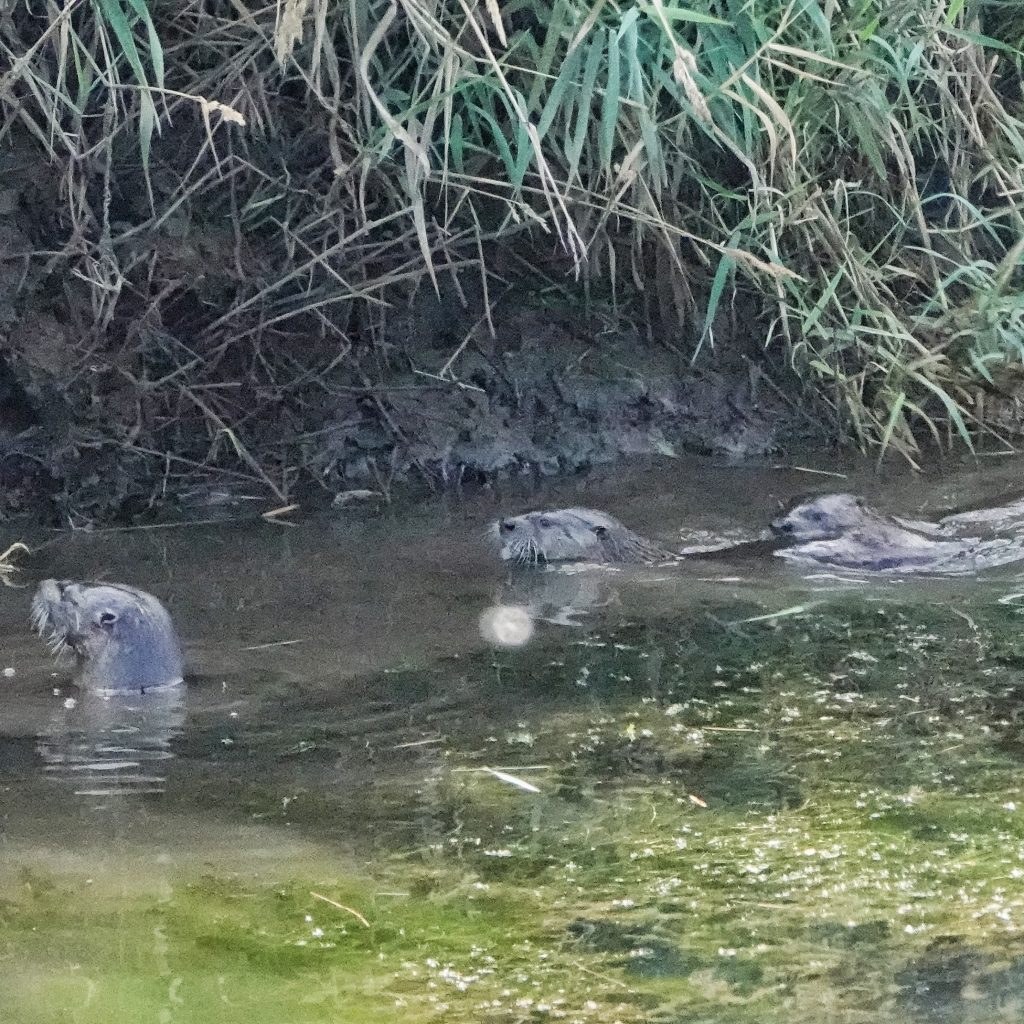
Eats-Fish, amphibians, freshwater clams and mussels, snails, small turtles, crayfish, small or young birds, squirrels, muskrats, young nutria, terrestrial and aquatic arthropods, etc; there are anecdotal reports of them drowning and eating dogs; in captivity they cannot survive on a diet of only fish.
Eaten by-Due to their size and ferocity mature river otters are not preyed upon with regularity, but coyotes, bobcats, raptors and other carnivores prey on the young; they are vulnerable to parasitic worms such as cestodes, nematodes, and trematodes, and to ectoparasites such as fleas, ticks, and lice.
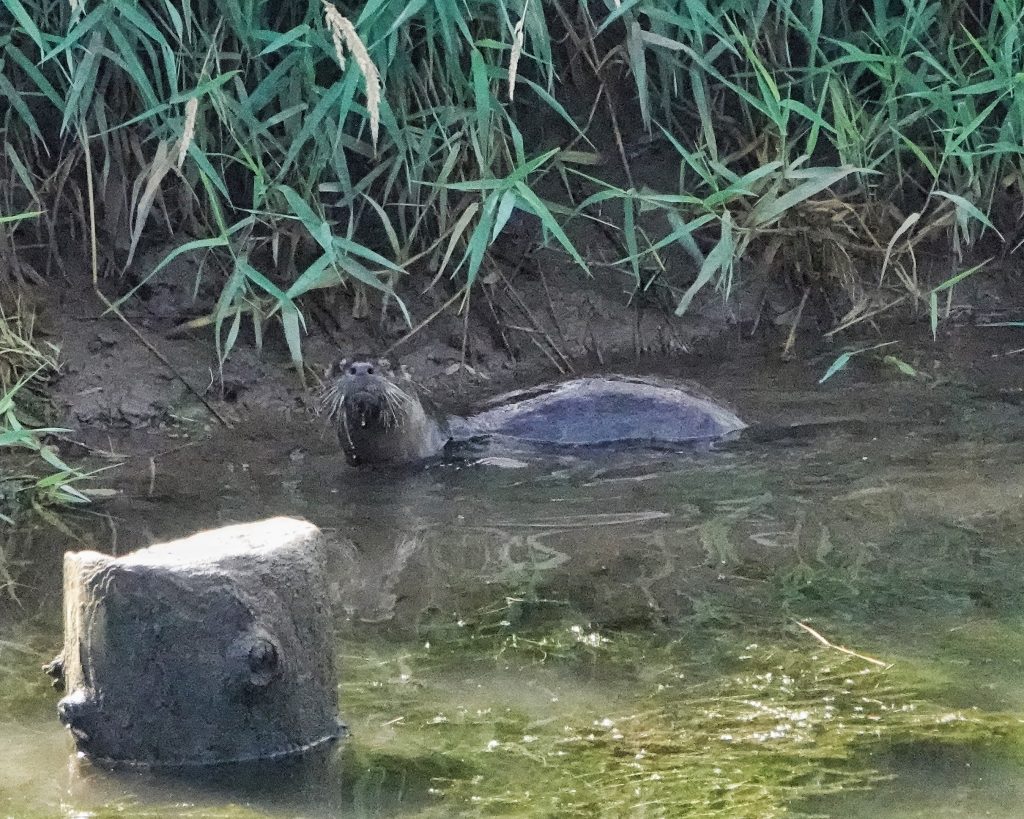
Life cycle-1-6 blind, furred kits are born from February through April; kits first leave the den at 3-4 months, around the time they are weaned, and may leave the family group at 6-7 months, although females will supplement their diet with solid food for up to 9 months; males are not allowed around the kits until they leave the den; sexual maturity is usually reached at 2 years, although some females may enter oestrus as yearlings; females breed shortly after giving birth, but delay implantion of the embryos for 8 months or more; gestation is 61-63 days; may live over 20 years in captivity, but seldom make it longer than thirteen in the wild.
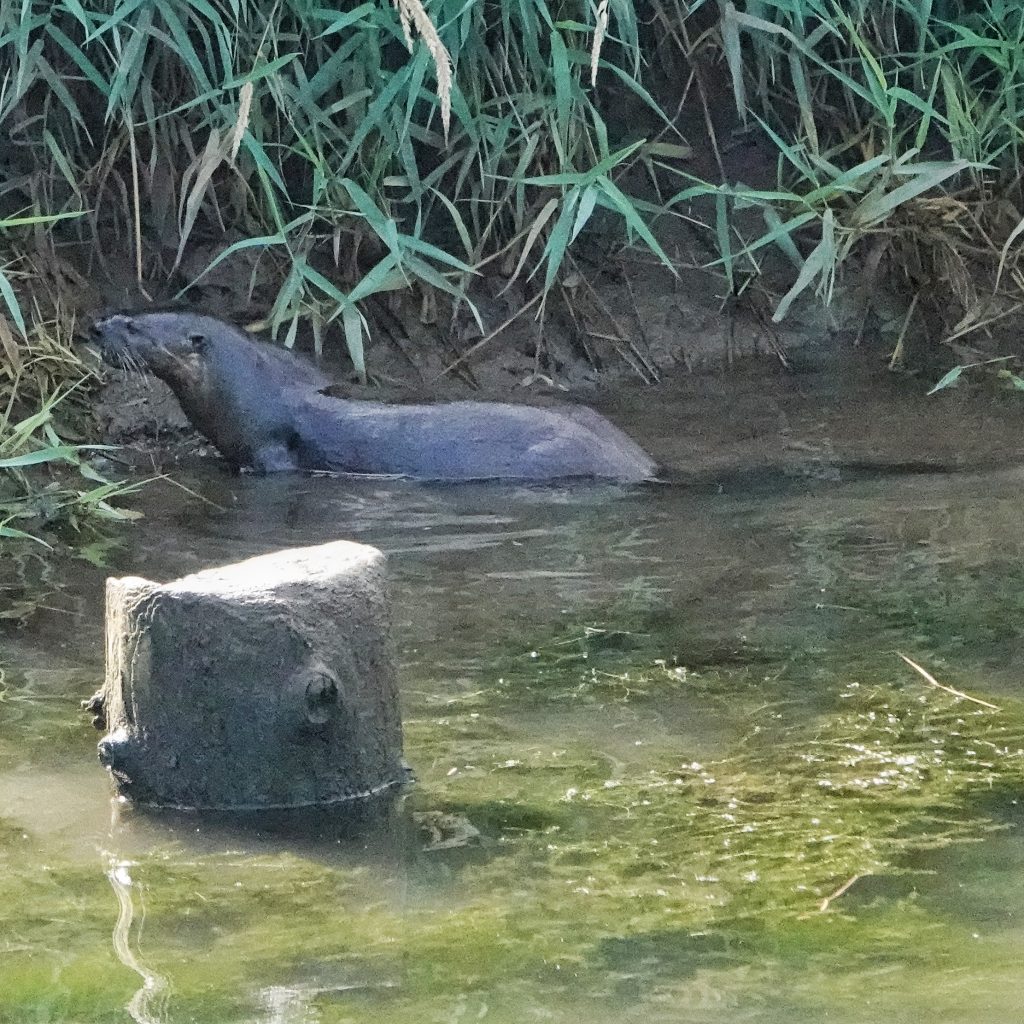
Etymology of names–Lontra is a colloquial version of the Latin word for otter, which is ‘lutra’. This name change occurred in 2008 when the new world otters were segregated from the old world otters. The specific epithet canadensis refers to the locality of the type specimens first described and named by Schreber in 1777.
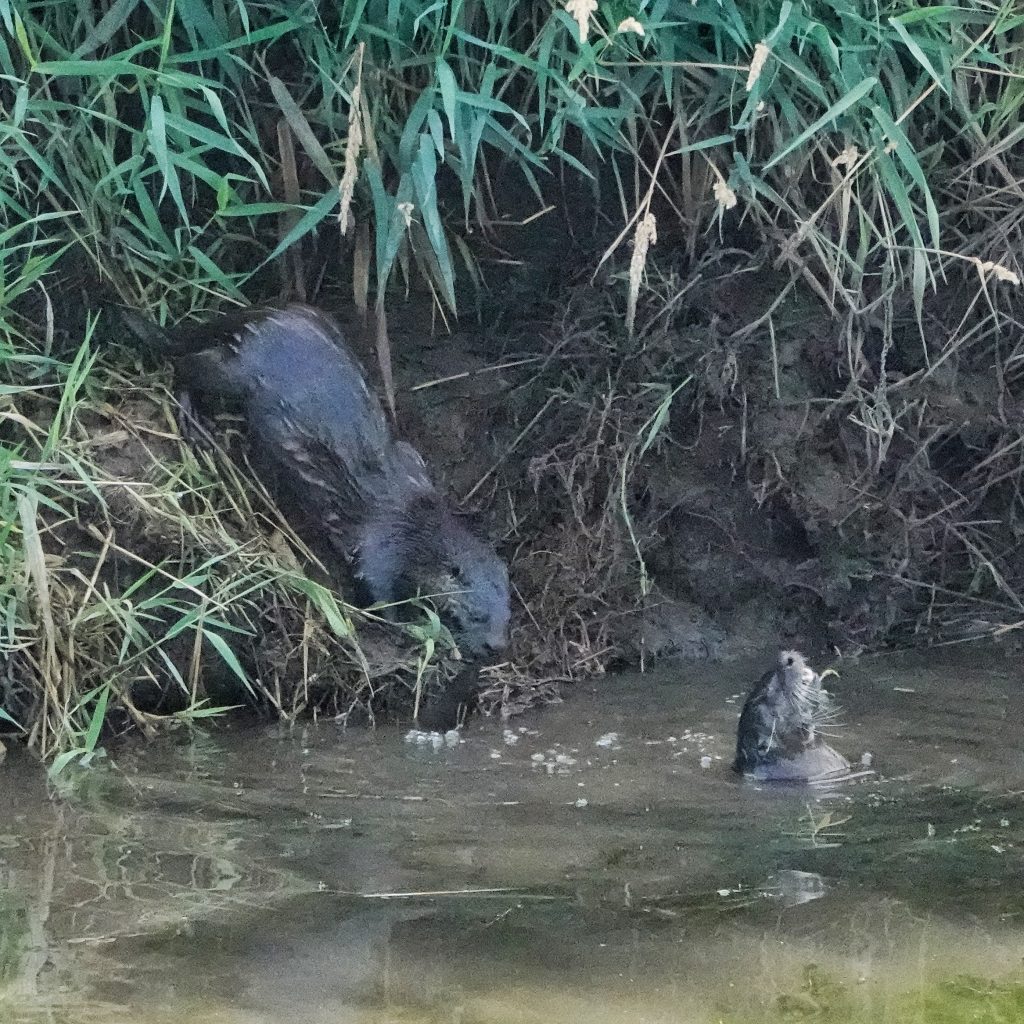
North American River Otter | National Wildlife Federation
ADW: Lontra canadensis: INFORMATION
River Otter (Lontra canadensis) | UWNPS
Lontra canadensis – Vertebrate Collection | UWSP
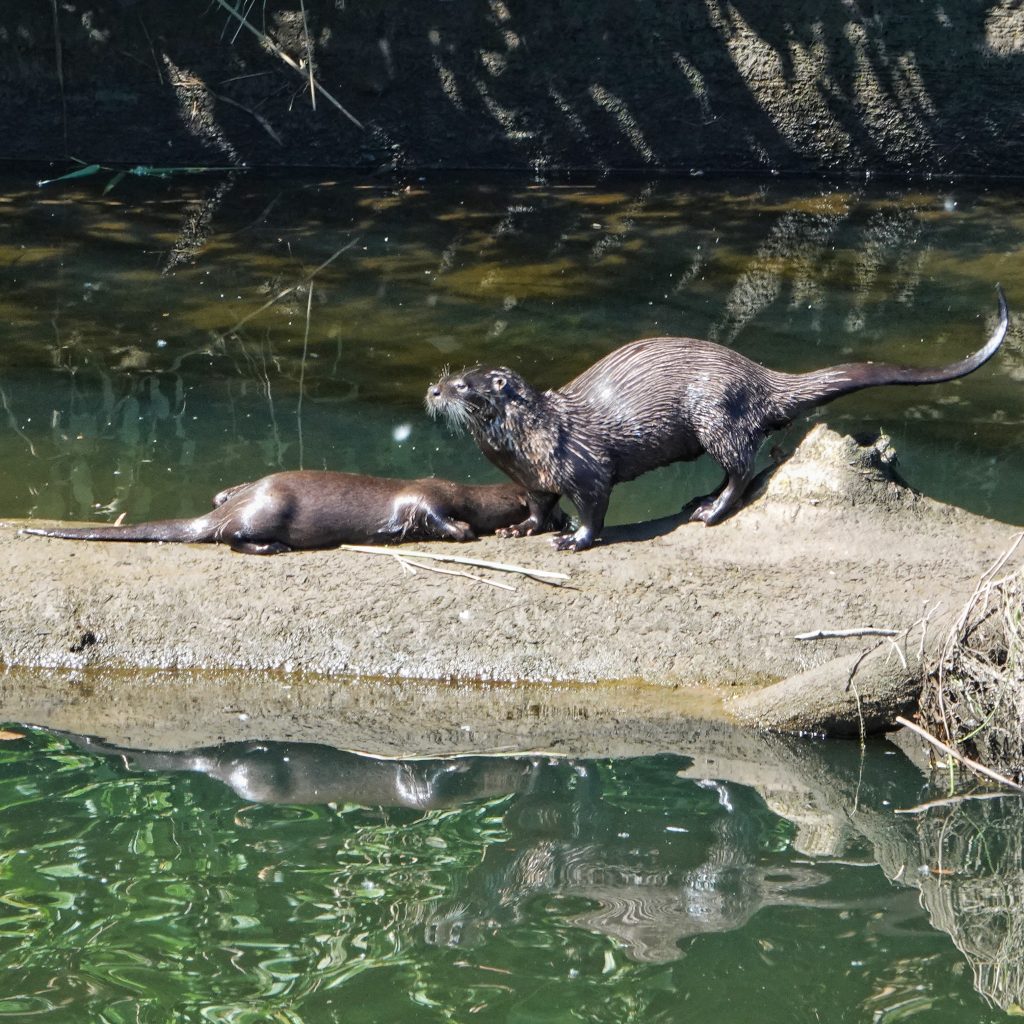
Loves river otters.
My old Airedale would sniff them out regularly on the southern more wild shores of Lake Whatcom. Haven’t seen any though for years.
I hope your luck changes soon in that regard, Valerie! Thanks for your comment.
Dan they are indeed a fierce critter. I speak from experience of having caught one in a leg hold trap on an open and broken beaver damn in Northern Ontario. A huge male and a battle royal at 20 below. However the most memorable image from that winter trapping was snowshoeing across a frozen lake in a pure white landscape and seeing an otter appear out of a blow hole in the middle of nowhere dark as coal with a with a brilliant and multicolored lake trout bleeding bright blood red on snow.
Old time trappers claimed that otters deconstructed beaver dams enough to lower the lake level so they could travel more easily under the ice’s surface and catch breath.
Fur trapping remains one of my major personal regrets but a winter spent on snowshoes reading the story told by tracks in the snow is unforgettable. Now I am fortunate enough to see them play in the creek below my house on occasion. They are the epitome of evolutionary design perfection. Thanks for the post. D
Thanks for sharing that, Doug! Really paints a picture. I too was a trapper in my misspent youth, though I don’t actually regret it because of how glorious some of those times were, and how much I learned. But eventually I couldn’t justify what I was doing, and I’m glad I finally evolved to the point where I could be in nature without so much bloodshed. Thank you!